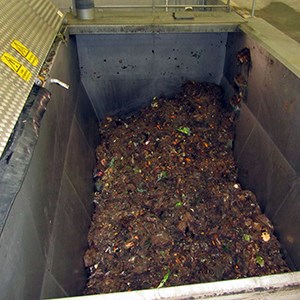Contact
anna.schnurer@slu.se, 018-67 32 88

In this projects, we study anaerobic hydrolysis of different kinds of food wastes to determine how the yields of acetic acid can be maximized. How much of the carbon in the waste gets turned into acetic acid?
We want to maximize the conversion of total carbon into acetate while minimizing carbon losses in the form of CO2. Therefore, we are investigating how the composition of the substrate affects the conversion yield of total carbon into acetate.
The concept of high acetate production has been shown before for source sorted municipal solid waste, but here the acetate fraction was used for biogas production. In this project this material as well as other materials (slaughter house waste, dairy waste, waste from food processing industry etc) will be evaluated. These materials will be made available though the commercial biogas producer Tekniska Verken i Linköping AB.
The food waste will be sanitized at the biogas plant through heating at 70 °C for 1 hour, which is the common procedure before biogas production. The material will then be converted to acetate by continuous culturing of anaerobic bacteria performing hydrolysis and acetogenesis in laboratory reactors.
The resulting high acetate fraction will be separated, either through phase separation or alternatively filtration or centrifugation and finally used as growth medium for yeast (in project 2). The second fraction containing organic materials not converted to acetate will be chemically characterized and later also evaluated in regard to methane potential.
anna.schnurer@slu.se, 018-67 32 88